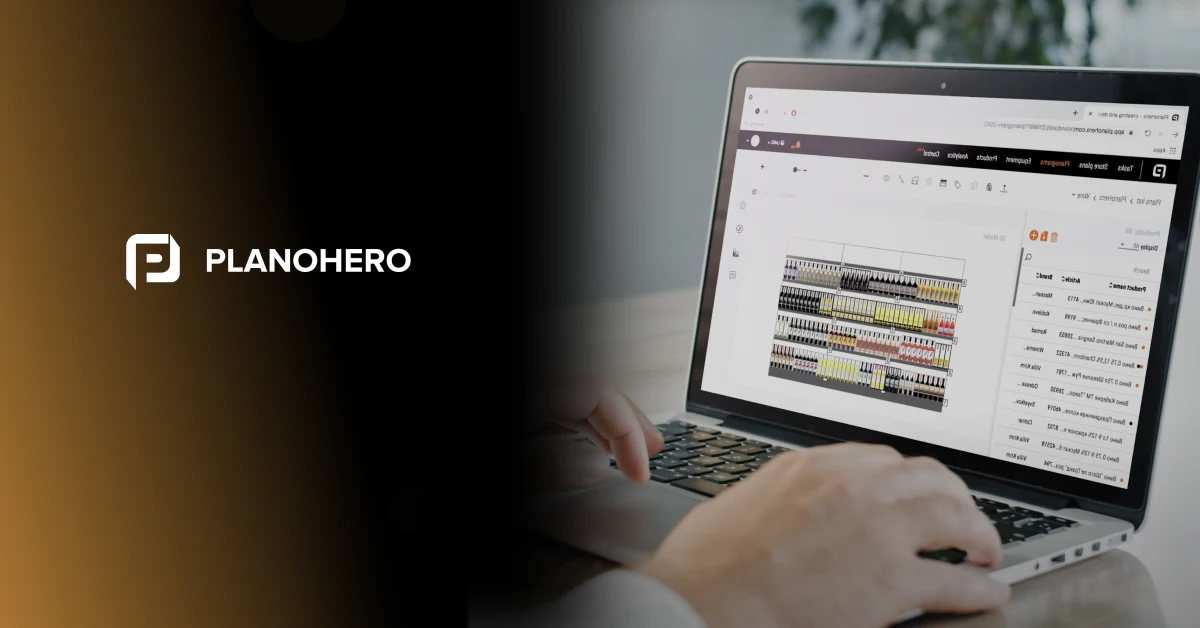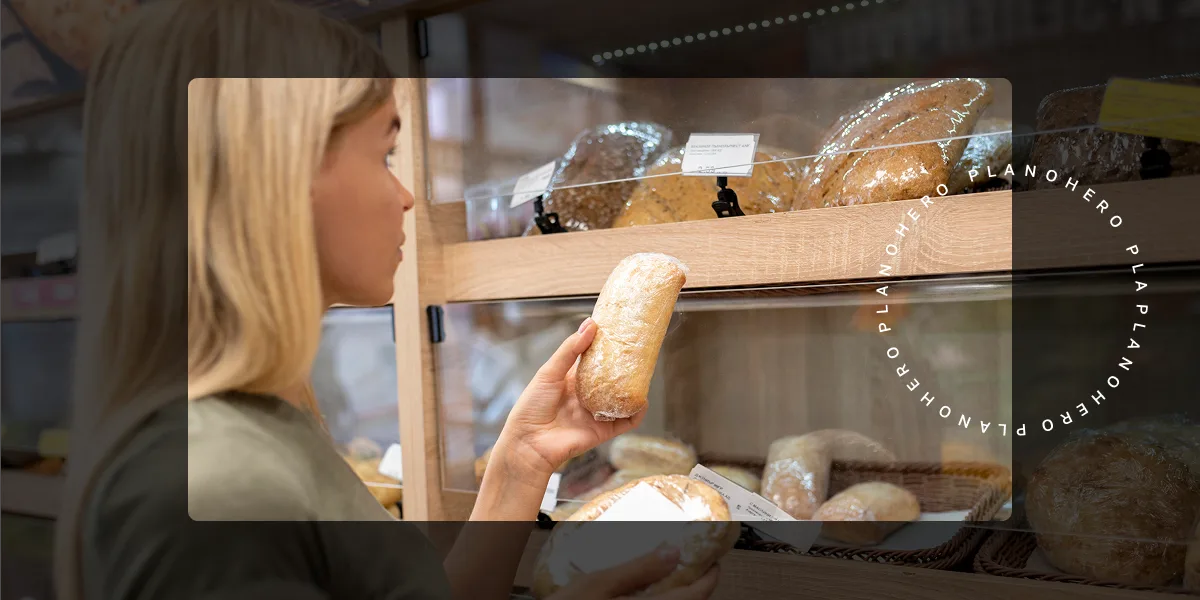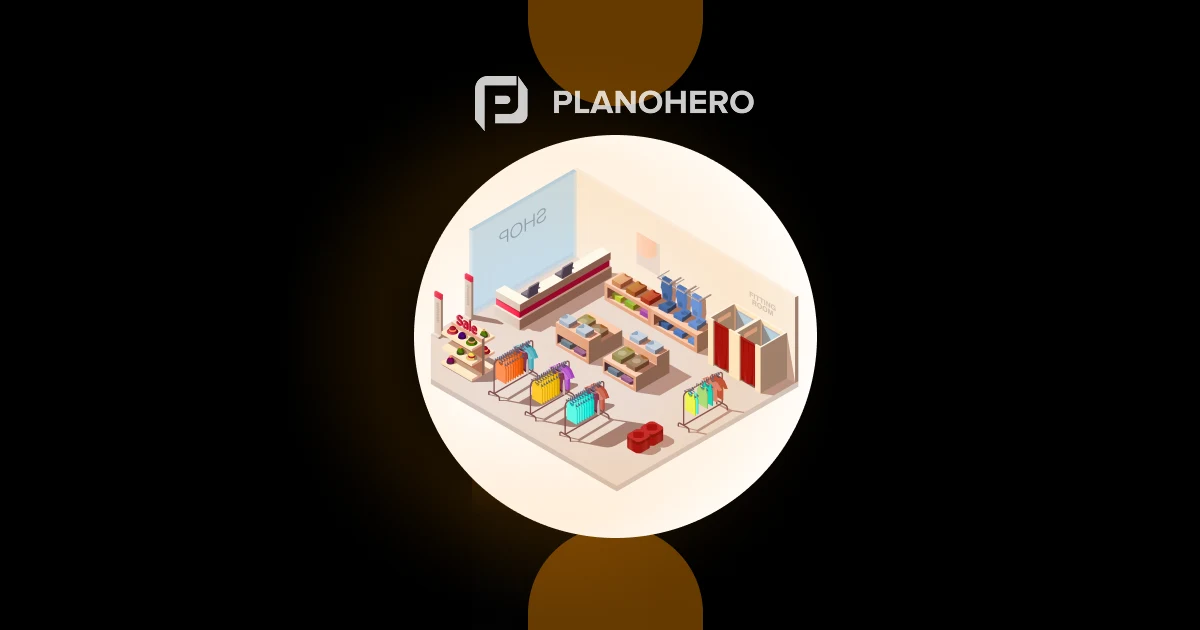¿Qué es la optimización del planograma?
La optimización del planograma es tanto una ciencia como un arte, enfocada en la colocación estratégica de productos en los estantes de las tiendas minoristas para maximizar su visibilidad, accesibilidad y probabilidad de compra. No es un proceso basado en suposiciones, sino en análisis, datos de ventas, dinámica de categorías y flujo de consumidores.
Un planograma es un esquema visual que describe la disposición de los productos, la cantidad de frentes y la distribución del espacio en los estantes. La optimización lleva este esquema al siguiente nivel, alineándolo con datos reales de ventas, necesidades específicas de cada tienda, tasas de rotación y patrones de comportamiento de los clientes.
A diferencia de los diseños estáticos con un enfoque único para todos, los planogramas optimizados son dinámicos, adaptativos e individualizados. Están diseñados para que cada centímetro del espacio de estantería contribuya a la rentabilidad y mejore la experiencia de compra.
El papel de los planogramas en la gestión del espacio de venta
Al planificar el espacio de venta, la ubicación de los productos es mucho más que una decisión estética. Es una táctica generadora de ingresos. Cada exhibidor, cada grupo de productos y cada nivel de estante influyen en cómo compran los clientes y si compran.
Un planograma bien optimizado proporciona estructura a las categorías, mejora la visibilidad del inventario y garantiza que los productos más vendidos estén a la altura de los ojos o en zonas de alto tráfico. También permite un control más preciso del inventario, agiliza los procesos de reposición y mejora la eficiencia del personal.
Con la creciente complejidad de gestionar múltiples tiendas —especialmente en redes que operan cientos o miles de locales— la optimización de planogramas ha pasado de ser una tarea manual y laboriosa a un sistema automatizado basado en datos.
Ventajas de la optimización de planogramas
-
Aumento de ventas y márgenes de beneficio
Colocar productos de alta demanda en ubicaciones óptimas —como a la altura de los ojos o al final de los pasillos— impacta directamente en las ventas. Las estrategias de venta cruzada (como ubicar snacks junto a bebidas) impulsan aún más las compras impulsivas y aumentan el ticket promedio.
Los minoristas que implementan planogramas adaptados a tiendas específicas suelen ver aumentos en ventas del 2–3% y una mejora notable en el margen gracias al mejor rendimiento de los SKU.
-
Reducción de los costes de inventario
Los diseños estandarizados suelen provocar exceso o escasez de productos, especialmente en tiendas con diferentes perfiles demográficos. La optimización del planograma permite ajustar los niveles de inventario según la demanda local proyectada.
Esto no solo reduce desperdicios y deterioro —especialmente en productos perecederos— sino que también mejora la rotación de stock y minimiza el capital inmovilizado en productos de baja rotación.
-
Reducción del tiempo de trabajo en tienda
Uno de los beneficios menos valorados de los planogramas optimizados es la reducción del tiempo de manipulación. Cuando la disposición de productos es clara e intuitiva, el personal dedica menos tiempo a reponer estantes o corregir errores.
También simplifica la formación de nuevos empleados, ya que pueden seguir instrucciones visuales estandarizadas para cada estantería o categoría.
-
Mejora del servicio al cliente
Un cliente que encuentra fácilmente lo que busca es más propenso a comprar y a regresar. Una agrupación lógica de productos, una oferta bien seleccionada de artículos esenciales y una presentación atractiva mejoran la experiencia de compra.
Además, un diseño optimizado permite incorporar promociones o campañas estacionales sin sacrificar orden ni visibilidad.
Por qué los planogramas por tienda son más importantes que nunca
No hay dos tiendas iguales. Diferentes ubicaciones tienen diferentes patrones de circulación, tamaños de estantería, preferencias de los clientes y perfiles de demanda local. Sin embargo, muchos minoristas aún usan planogramas centralizados que no reflejan estos matices.
Es ahí donde la optimización del planograma a nivel de tienda aporta un valor incalculable. Adaptando los diseños a datos reales de ventas e inventario de cada local, los minoristas pueden reducir el exceso de stock, mejorar la disponibilidad de productos y responder con precisión a la demanda local.
Por ejemplo, una tienda suburbana puede tener alta demanda de productos para el cuidado infantil, mientras que una tienda urbana de la misma cadena necesitaría más espacio para comidas preparadas. Un planograma único no puede satisfacer eficazmente las necesidades de ambos. Pero uno personalizado, sí.
Automatización del proceso de optimización de planogramas
Crear planogramas personalizados para cientos o miles de tiendas puede parecer una pesadilla logística. Históricamente lo fue. Pero con el software moderno de optimización, eso ha cambiado.
La automatización permite que los equipos centrales configuren parámetros basados en volumen de ventas, márgenes, tamaños de empaque y frecuencia de suministro, y luego generen miles de planogramas precisos con una mínima intervención manual.
Cómo apoya la automatización:
-
Actualizaciones semanales más rápidas para nuevos SKU o sustituciones
-
Pronósticos localizados para alinear los planogramas con la demanda estacional
-
Procesos optimizados de reposición y ampliación de surtido en todos los formatos
Los minoristas que usan automatización para crear planogramas pueden reducir los costes laborales de planificación hasta en un 25%, incluso con más planogramas en gestión.
Buenas prácticas para una optimización efectiva de planogramas
-
Diseñar para la accesibilidad del producto
Asegúrese de que los productos de alta rotación estén a la altura de los ojos y al alcance. Agrupe las categorías clave en flujos lógicos e intuitivos. Esto beneficia tanto a los clientes como al personal.
-
Usar vecindades de producto
Utilice datos para planificar ubicaciones complementarias. Colocar productos relacionados (como café y leche o pasta y salsa) uno junto a otro incrementa las ventas cruzadas y mejora el rendimiento de la categoría.
-
Planificar cambios estacionales y promocionales
Los minoristas deben mantener flexibilidad. Los planogramas ajustables facilitan la implementación de campañas estacionales y promociones. Es clave seguir un calendario de actualizaciones frecuentes para adaptarse al mercado.
-
Monitorear y refinar con base en el rendimiento
Los planogramas no son herramientas de “configurar y olvidar”. Analice informes de ventas, frecuencia de reposición y feedback de clientes para evaluar el rendimiento. Las pruebas A/B constantes pueden revelar nuevas oportunidades.
-
Capacitación y compromiso del personal de tienda
Ni el mejor planograma funciona si no se ejecuta correctamente. La capacitación del equipo es clave para el éxito.
Use guías visuales, instrucciones paso a paso y herramientas en tiempo real para que comprendan el “por qué” detrás del plan. Recopile opiniones del personal que interactúa con los clientes; pueden brindar información valiosa.
Considere introducir dinámicas de gamificación como tarjetas de puntuación internas o programas de incentivos para mejorar la motivación y el cumplimiento.
Software para la optimización de planogramas
El comercio minorista moderno exige rapidez, precisión y adaptabilidad. La planificación manual no puede seguir el ritmo de los cambios en las preferencias del consumidor, las innovaciones de producto ni la complejidad operativa.
Aquí es donde el software de optimización de planogramas cambia las reglas del juego. Proporciona automatización, planificación visual, ajustes locales y ejecución coherente en todos los formatos de tiendas — desde supermercados grandes hasta tiendas de conveniencia compactas.
¿Quiere hacer que la optimización de planogramas sea fluida? PlanoHero es la solución minorista lista para usar que combina automatización, personalización y precisión en una plataforma potente. Con PlanoHero, los minoristas pueden gestionar miles de planogramas con facilidad y adelantarse en un mercado dinámico.
¿Buscas un servicio para crear planogramas?
Prueba la versión demo gratuita de PlanoHero




